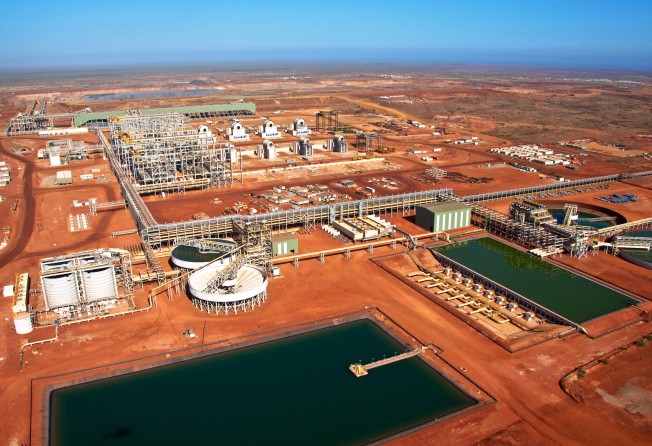Citic transparency falls short as Sino Iron swept under the rug
Transparency is lost as acquisition of parent eradicates mandatory disclosure requirements relating to stalled Australian mining project

It has been a year since Citic Pacific’s acquisition of its parent Citic Group, which was billed as the “pioneer” move in China’s new round of state enterprise reform.
So far Citic has announced reforms in a helicopter subsidiary to allow the hiring of a career manager instead of a party cadre as its chief %executive.
This baby step, however, cannot compensate for the significant drop in its transparency following the acquisition.
The new black box is called Sino Iron – a West Australian iron ore mining project that no one has any idea when fully fledged commercial operations will begin.
Thanks to falling mineral prices and poor execution, the project has become a money pit for investor Citic; a shame for state-owned construction company Metallurgical Corp of China (MCC); and a political embarrassment to the country.
Analysts considered it a key mover in Citic’s value. Yet, there is now little to monitor.
A comparison of Citic’s annual reports for the past two years is telling.
In the 2013 report, chairman Chang Zhenming devoted four-fifths of his report to detailing lessons learned; turn-around efforts and the project’s bright future.
In the latest report, Chang gave it only one line.
“We have made disclosures above and beyond mandatory requirements … the Sino Iron impairment was another example. It is important that our stakeholders, including minority investors and the public, feel that the lines of communication are always open with the company,” he said.
The truth is the HK$19.5 billion provision made is the only disclosure relating to the project’s financials in the 312-page report.
The 2013 report carried a 10-page segment account on Sino Iron, detailing its revenue, losses, assets, liabilities and cash flow as well as its future funding plans. That gave analysts and shareholders a good idea of what was going on down under.
Citic has swept the project under the carpet. Size worked here. If Sino Iron was a bad apple in a basket of fruit, the acquisition of the parent’s grandiose business has turned the basket into a supermarket. The bad apple can no longer be seen.
This is because under the accounting rules, a listed company has to do a segment report on business that accounts for 10 per cent or more of its assets or revenue.
Sino Iron used to account for 33 per cent of Citic’s total assets. Citic was obliged to give a detailed report.
Following the acquisition of the parent’s bank, broker and properties, Citic’s assets have ballooned by 22 times to HK$5.95 trillion. Based on the 2013 asset size, Sino Iron’s percentage of the tally has %been reduced to less than 1.5 %per cent.
That means that detailed disclosure is no longer a requirement despite market concerns about the burden Sino Iron is placing on Citic.
So, ironically, Chang could tout a significantly reduced disclosure as proof of the company’s openness.
This could help explain why he said: “We have nothing more that we should disclose”, when asked by journalists after the annual general meeting about the progress of its negotiations with MCC on the compensation to Citic for delays in the construction of the project.
The beauty of size goes further.
Imagine a disposal of Sino Iron to the state. You may not even hear of it.
The listing rules require a company to make public any transaction involving an asset that accounts for 5 per cent or more of its assets, revenue or profit.
Therefore technically speaking, unless the sale of Sino Iron would result in a significant loss, Citic doesn’t have to disclose it. Puff! A fiasco disappears, at least from the public arena.
Perhaps that explains why the executive responsible for the mining business has left the executive committee, which oversees Citic’s daily operation in the recent reshuffle, while the bank and securities executives stay on.
This sleight of hand, however, means nothing to the market.
Following the approval of the acquisition in early June, Citic rose to a three-year high of US$16.68 but soon lost steam. Its yearly return is a negative 5.7 per cent, underperforming the Hang Seng Index.